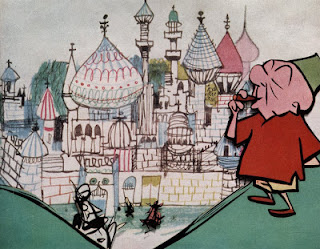Cape Town Affair: Right Wing Noir, South African Style
In 1967, long-time Fox director, Robert D. Webb went to South Africa (for 20th Century Fox International) to slavishly remake Samuel Fuller’s Pickup on South Street (1953), this time titled Cape Town Affair. Webb literally transports Pickup on South Street to its new setting, crediting Samuel Fuller and Harold Medford for a script nearly recreated word for word and for characters and interior sets nearly duplicated except for two changes: a change in two characters’ names, from Mo to Sam and from Tiger to Donkey and – most importantly—a move to late 1960s Cape Town, South Africa, that becomes concretized by a portrait of the late Prime Minister Hendrik Verwoerd on the walls of a police station and an intelligence agency’s office.
The film is a natural to remake in this setting, not as a recontextualization but as a complete transposition not only of dialogue but ideology for several reasons: 20th Century Fox, Pick Up On South Street’s production company, produced the film for Killarney Studios, their South African subsidiary; the film in its original form reinforces anti-communist values, which, in South Africa, are equated with apartheid policies; and the film was produced and distributed to white-only audiences in South Africa who were growing more and more paranoid about communist-led Black insurrections, especially on South African borders. Unlike with most remakes, Webb and Fox did not recontextualize Pick Up On South Street when it remade it in 1967 because it did not need to change the film to fit its 1960s South African location.
In spite of the few changes to the screenplay, Cape Town Affair fits just as well in an updated setting as Pickupdid in 1953 New York. Such a good fit for a 50s Red scare film becomes possible in Cape Town Affair because of its South African setting and its foregrounding of the founder of the Afrikaner Republic, Hendrik Verwoerd, whose photograph prominently hangs in several of the Cape Town Police and Intelligence offices. For South Africans, Verwoerd’s portrait signifies the anti-Communist values espoused by Fuller’s screenplay, since Verwoerd’s Nationalist-led republic designed and constructed a program of Apartheid that was continuously threatened by communist-led resistance movements from its inception.
Verwoerd’s assassination just prior to the film's release enhances his role as a heroic representative of the Afrikaner republic, a republic that maintained freedom for its white citizens only by oppressing black Africans and the communist party members and organizations that would help them protest against their program of Apartheid. Late 1960s South Africa, then, provides a perfect environment in which to drop a 1950s American anti-communist film. It also may provide ammunition for claims that Samuel Fuller—or at least Twentieth Century Fox Films—promoted a right-wing agenda in Fuller's 1950s films and for 1960s 20th Century Fox International films shot in South Africa.
Propaganda films like Cape Town Affair worked for their white South African audiences because they supported white independence and control of an African nation. When Skip and Sam talk in the tea house about giving up the microfilm, the power of that Afrikaner nationalist ideology becomes clear. Skip asks Sam, “are you waving the flag, too?” And Sam replies, “Even in our crummy business you gotta draw the line somewhere,” a line Sam draws with Joey to her death and that eventually Skip draws, even if mainly to gain Candy’s respect. The communist espionage ring is thwarted, since they don’t get away with the microfilm and whatever secrets it contains. But ultimately what the film reinforces is Apartheid and the White Afrikaner dominated South Africa it allows.

























.JPG)
